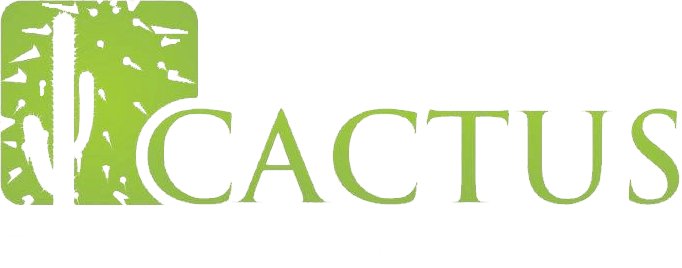
While the health concerns of the Covid-19 pandemic remain, some of the focus is now shifting to the economic impact. Measures taken to reduce the spread of infection and save jobs have cost the government a huge amount that will need to be recouped in some way.
The final Covid-19 bill is impossible to estimate, we don’t know how things will change over the coming months. However, the Office for Budget Responsibility estimates the cost for the current tax year is likely to be more than £300 billion. The government was expecting to borrow around £55 billion for the whole of 2020/21. But in the first two months of the tax year alone, it has borrowed £100 billion to cover the costs of the scheme implemented due to the pandemic.
Chancellor Rishi Sunak was appointed Chancellor in February this year. He’s already delivered a delayed Budget in March, as the pandemic was starting to take hold in the UK, followed by the Summer Statement in July. Both have focused on protecting people and the economy as Covid-19 spread. As the Autumn Budget is now approaching, his attention may be turning to how some of the costs can be recovered.
While nothing has been formally announced yet, speculation is mounting that some allowances will be reduced, some of which may affect you.
1. Capital Gains Tax
Speculation that changes to Capital Gains Tax (CGT) will come in are rife after the Chancellor commissioned The Office of Tax Simplification to investigate if it’s “fit for purpose”. Compared to previous levels of CGT, the current rates are relatively low. This provides plenty of scope for allowances to be reduced or rates to rise.
CGT is paid on the profit when you sell certain assets. This may include a property that isn’t your main home, personal possessions worth more than £6,000 (excluding your car), investments not held in an ISA, and business assets.
Individuals have an annual exemption of £12,300 per tax year. Profit beyond this allowance is taxed. Basic rate taxpayers have a CGT rate of 10%, this rises to 20% for higher and additional rate taxpayers. Where the profit is made on property, an additional 8% tax is added for all Income Tax bands.
2. Pension tax relief
A change in pension tax relief hasn’t been mentioned by Rishi Sunak yet. However, his predecessor Sajid Javid has called on the government to reduce the amount of tax relief paid to high earners. It could now be something the current Chancellor is exploring too.
Assuming you don’t exceed your annual pension allowance, you receive tax relief at the highest level of Income Tax you pay. As a result, higher and additional rate taxpayers receive far more through this incentive. The Pensions Policy Institute found workers earning less than £50,000 made up 83% of taxpayers, but they received less than a quarter of pension tax relief paid.
A change to pension tax relief is likely to make it ‘fairer’ by offering a flat-rate tax relief for all pension savers.
3. Pension triple lock
The pension triple lock guarantees that the State Pension will rise every year in line with either inflation, average wage growth or a minimum of 2.5%. It helps to protect spending power among pensioners. Maintaining the triple lock was a manifesto pledge, but some signs are pointing towards changes in the future.
The Chancellor told the Treasury Committee that it would be appropriate for the government to look at the triple lock at the “right time”. There are concerns that a spike in wages would make the guarantee to pensioners unaffordable in the coming years.
4. Pension tax-free lump sum
Currently, when you access your pension, which is available from the age of 55, you can withdraw 25% of the money tax-free. Any further withdrawals are subject to Income Tax, the same way your salary or other sources of income may be.
The tax-free lump sum has proved a popular option among retirees and it’s a decision that’s likely to be unpopular with those approaching their retirement date. Reducing the tax-free lump sum to 20% could add £1.8 billion of extra revenue, the IFS has suggested, making it an attractive option for the Chancellor.
5. Inheritance Tax
Again, any changes to Inheritance Tax rules would prove unpopular but there have been growing calls to reform the system to make it fairer and simpler.
At the moment, individuals can take advantage of two allowances when leaving wealth to loved ones. The nil-rate band is currently £325,000, with no Inheritance Tax due if your estate is below this figure. Those passing on their main home to children or grandchildren can also use the residence nil-rate band, currently set at £175,000. Unused allowance can be passed on to a surviving spouse or civil partner. In effect, this means couples can leave up to £1 million without worrying about Inheritance Tax.
Reducing the allowances or scrapping the additional residence nil-rate band could help raise tax revenue.
Rishi Sunak has some decisions to face before the Autumn Budget, and it’s likely some allowances will be affected. It may be appropriate to change plans when these are announced, but you shouldn’t act on speculation. If or when things change, we’ll be here to help you.
Please note: This blog is for general information only and does not constitute advice. The information is aimed at retail clients only. Please do not act based on anything you might have read in this article. All contents are based on our understanding of HMRC legislation which is subject to change.
Levels, bases of and reliefs from taxation may be subject to change and their value depends on the individual circumstances of the investor. The Financial Conduct Authority does not regulate tax advice.
